
Volume 34 - Autumn 2012
Rebinding the Royal Collection's 'Birds of America'
A truly enormous undertaking - by Philippa Räder & Irene Campden
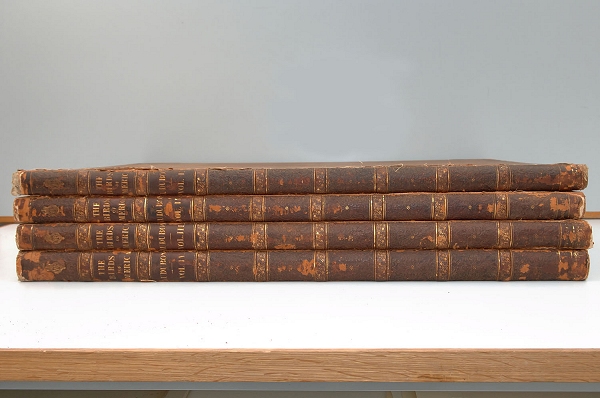
Before conservation
John James Audubon's immense Birds of America was produced in the UK between 1827 and 1838. The complete four-volume set comprises 435 individual plates which were issued on subscription. Audubon (1785-1851) planned to make his fame and fortune by producing "the best illustrations of American birds yet published". He insisted that the prints, taken from his original paintings, should depict birds life-size in their natural habitat. This meant using Double Elephant size paper (approximately 40 x 28 inches; 100 x 67cm), one of the largest sizes of western hand-made paper.
One of the original subscriptions was taken out by George IV and continued after his death by Queen Adelaide, wife of his successor William IV. This Royal Collection set has what seems to be the usual configuration of 100 plates apiece in Volumes I - III and 135 in Volume IV. It was bound c.1840 by John MacKenzie of London. The calfskin, like many leathers of that period, had suffered considerable degradation, beyond the point of no return.
The joints on all volumes were either weak or broken, caused primarily by physical breakdown of the leather and the weight of the boards.
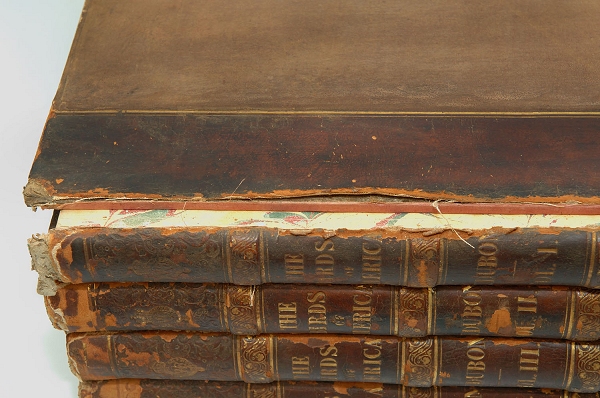
Broken joint before conservation
The original boards of Volume I weighed 4.95kg and 5.25kg. All boards were 6mm thick and measured 100.4 x 67cm.
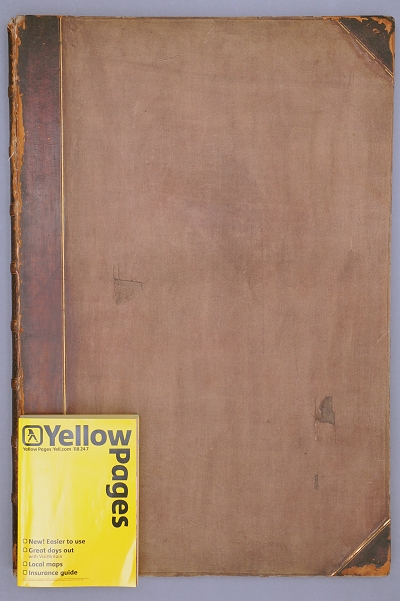
Comparison to Yellow Pages before conservation
The bindings had nevertheless preserved the amazing freshness of the printing and hand-colouring.
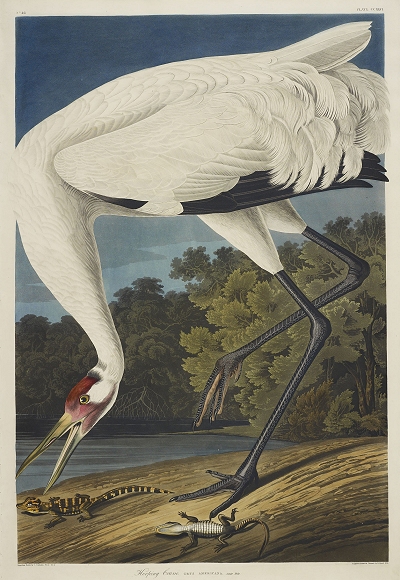
Plate CCXXVI Hooping Crane
To bind together single leaves in a mechanically successful way is problematic; when the leaves are a metre long, that problem is a big one. The sewing method used by MacKenzie restricted the ease of opening and resulted in the leaves being prone to tear near the spine.
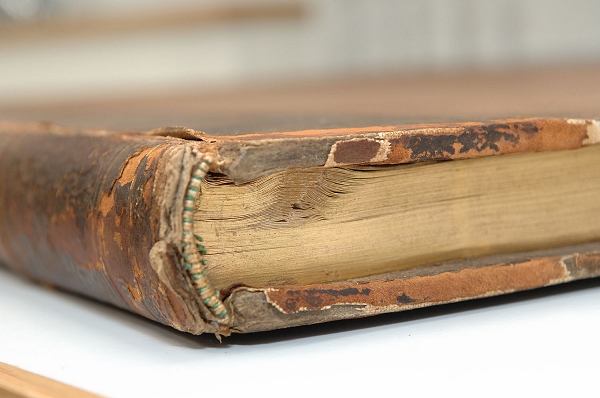
Plate tears before conservation
Over time the combination of poor quality leather, the volumes' weight and their particular sewing structure, together with frequent usage, had rendered them unsafe to handle. In January 2011 it was decided that complete conservation and rebinding was both necessary and feasible.
The set was completely disbound following written and photographic documentation. Damage to the leaves was repaired and an improved method of flexible sewing chosen. In order for the large volumes to open without compromising the plates an additional paper guard was to be added to each leaf, thus enabling the construction of folded sections. The resulting increase in width would mean requiring new boards but as the original covering style was to be exactly reproduced, the amount of leather required could be measured from the old bindings. Early consultation between the Head of Book Conservation, Roderick Lane, and Hewit's Roger Barlee identified an appropriate leather to be their large Bangladeshi archival-tanned repair calf. The best match in appearance was a seal grain in Hewit's stock colour 2 and they were able to supply sufficient skins, large enough for the huge project, without delay.
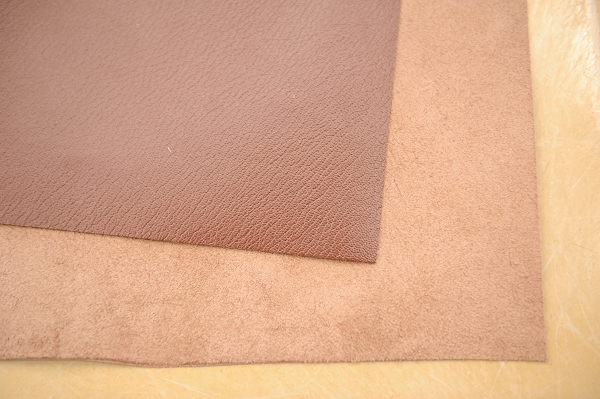
Seal grain calf
The template for the new spine leather was so long (111 x 29cm) that even with Hewit's largest skins it was necessary to cut on the diagonal.
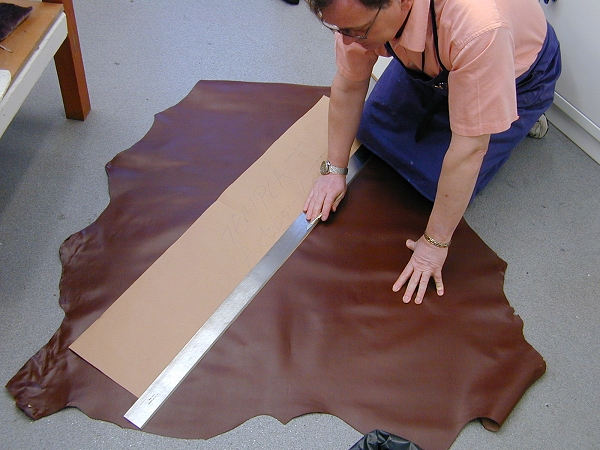
Measuring skin
The skins were kept full thickness as supplied, apart from edge paring which was trialled by hand and by using a paring machine. Both methods were equally successful. Prior to covering the spines of the rebound Birds of America, eight false alum-tawed bands were adhered to an archival kraft hollow. Thin hot animal glue was applied and left to dry.
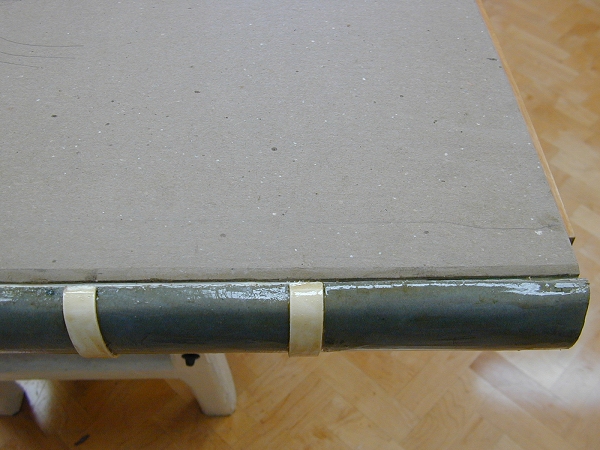
False raised bands and glue on hollow
The leather was then put on with paste. The volumes are so large that for covering the spine each one needed the entire team of five to work together, with the Head of Book Conservation "calling the shots". Ergonomics dictated that for siting the spine leather and for turning in at head and tail, the book rested on the floor.
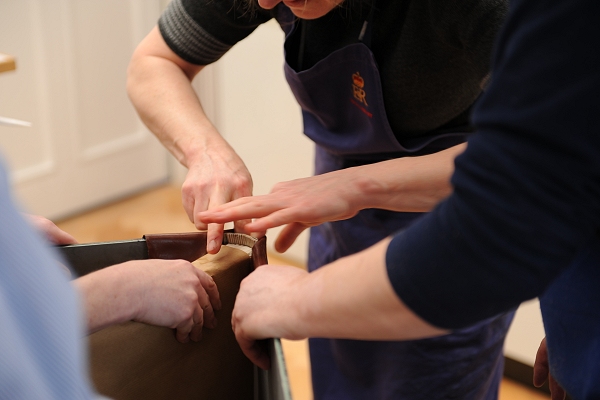
Turning in
The leather was moulded around the bands with the book lying on a bench. We found that keeping the surface damp with paste and using Teflon® folders rather than band nippers was preferable.
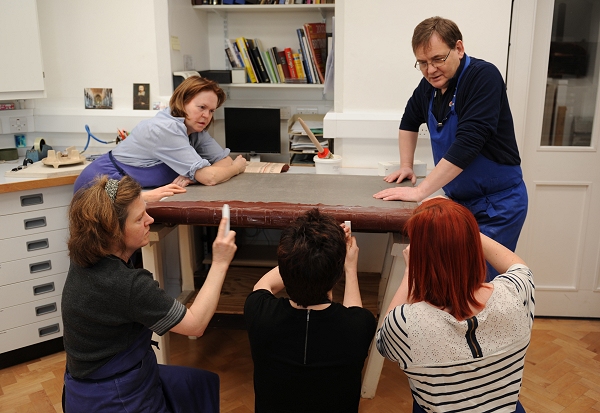
Working leather over raised bands
The leather was easy to work and putting on the corners presented no difficulties.
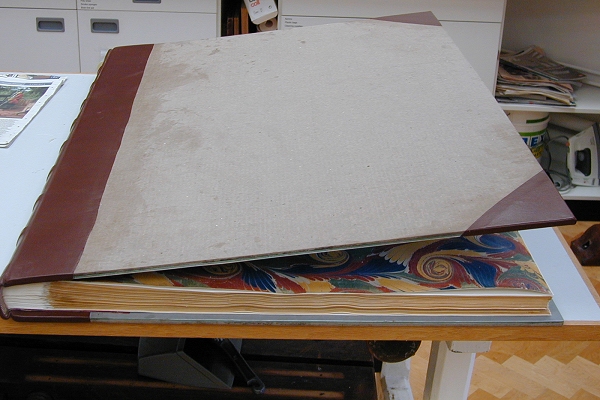
Leather spines and corners on volume
The sides were covered with Arbelave bookcloth to match the colour of the original.
When it came to finishing, the new leather took gold and blind impressions with relative ease, which came as a great relief.

Close-up of finishing on spines
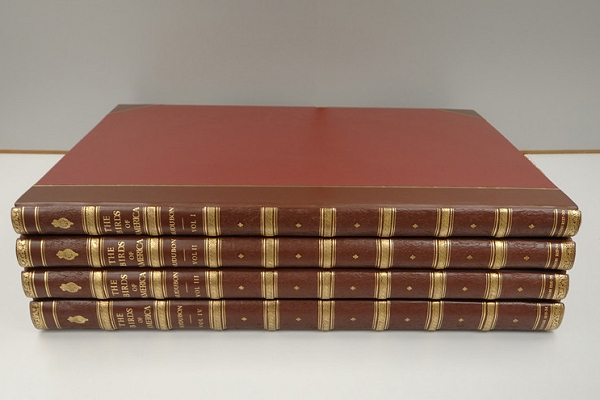
After conservation
This major project, involving all the Royal Library's book and paper conservators, took fifteen months to complete. These treasures of the Royal Collection can now be safely used and made accessible. All four restored volumes were first displayed in Windsor Castle in May 2012 on the occasion of a lunch to celebrate the Queen's Diamond Jubilee.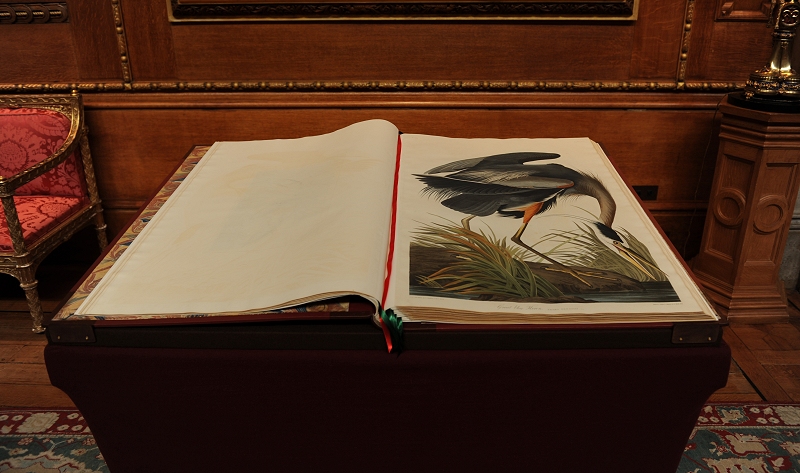
On display
More detailed information on the stages of conservation and binding can be found on the Royal Collection website here
The Audubon conservation team members were:
Roderick Lane
Irene Campden
Philippa Räder
Megan Gent
Aimee Priest
All images and text copyright Royal Collection Trust/© Her Majesty Queen Elizabeth II 2012
Philippa Räder and Irene Campden are book conservators/bookbinders for the Royal Collection, based in the Royal Library, Windsor Castle.
Philippa graduated in English from Cambridge University and worked in publishing and antiquarian bookselling in London and Los Angeles before training in book and paper conservation for four years at the Getty Research Institute in the early 1990s. Thereafter she was a project book conservator at the Huntington Library and ran her own bookbinding and letterpress-printing studio for five years. Returning to England in 2001, she spent eighteen months as a book conservator at The National Archives in Kew until she joined the Royal Collection in 2003.
